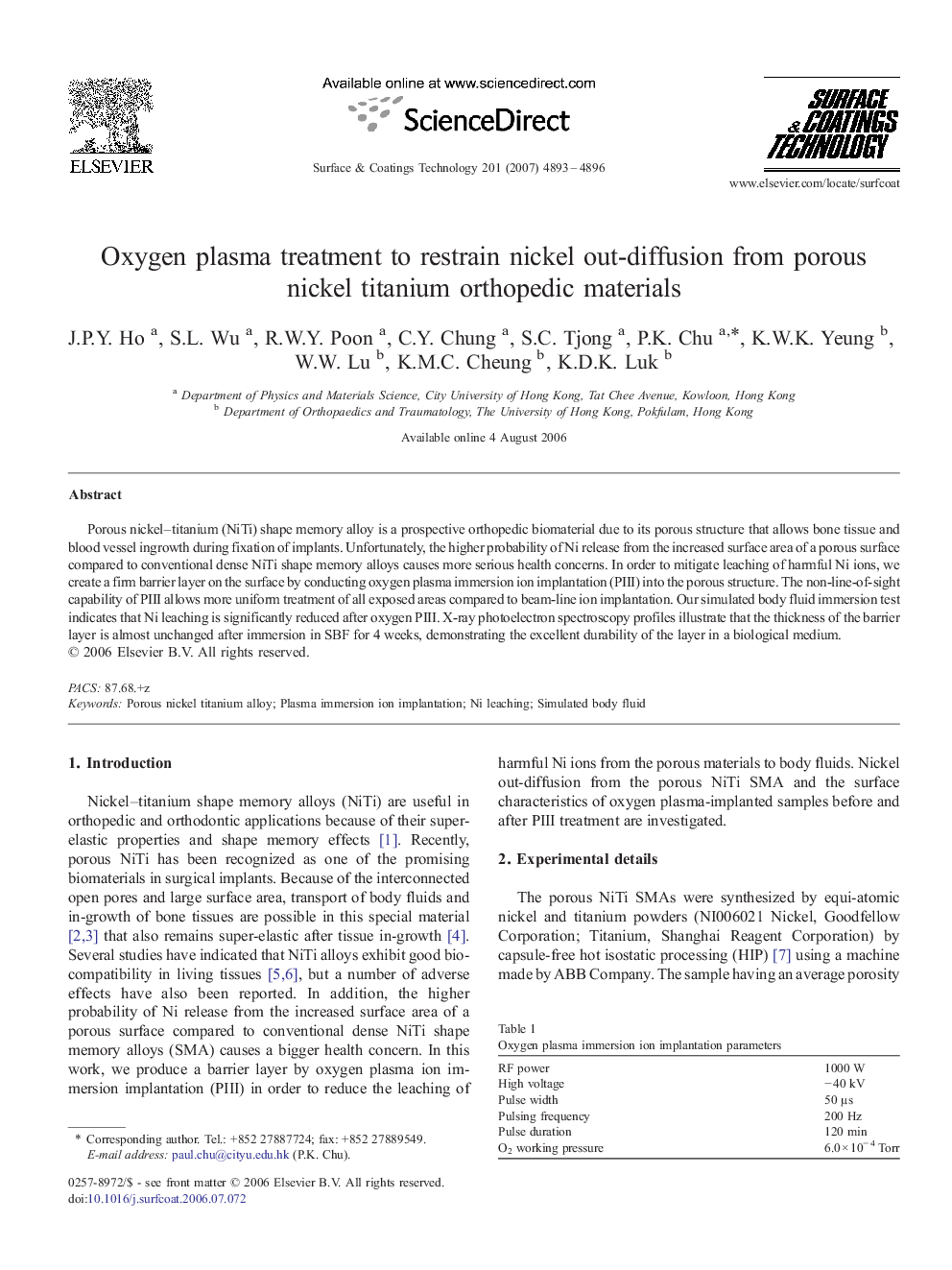| Article ID | Journal | Published Year | Pages | File Type |
|---|---|---|---|---|
| 1661545 | Surface and Coatings Technology | 2007 | 4 Pages |
Abstract
Porous nickel-titanium (NiTi) shape memory alloy is a prospective orthopedic biomaterial due to its porous structure that allows bone tissue and blood vessel ingrowth during fixation of implants. Unfortunately, the higher probability of Ni release from the increased surface area of a porous surface compared to conventional dense NiTi shape memory alloys causes more serious health concerns. In order to mitigate leaching of harmful Ni ions, we create a firm barrier layer on the surface by conducting oxygen plasma immersion ion implantation (PIII) into the porous structure. The non-line-of-sight capability of PIII allows more uniform treatment of all exposed areas compared to beam-line ion implantation. Our simulated body fluid immersion test indicates that Ni leaching is significantly reduced after oxygen PIII. X-ray photoelectron spectroscopy profiles illustrate that the thickness of the barrier layer is almost unchanged after immersion in SBF for 4Â weeks, demonstrating the excellent durability of the layer in a biological medium.
Related Topics
Physical Sciences and Engineering
Materials Science
Nanotechnology
Authors
J.P.Y. Ho, S.L. Wu, R.W.Y. Poon, C.Y. Chung, S.C. Tjong, P.K. Chu, K.W.K. Yeung, W.W. Lu, K.M.C. Cheung, K.D.K. Luk,
